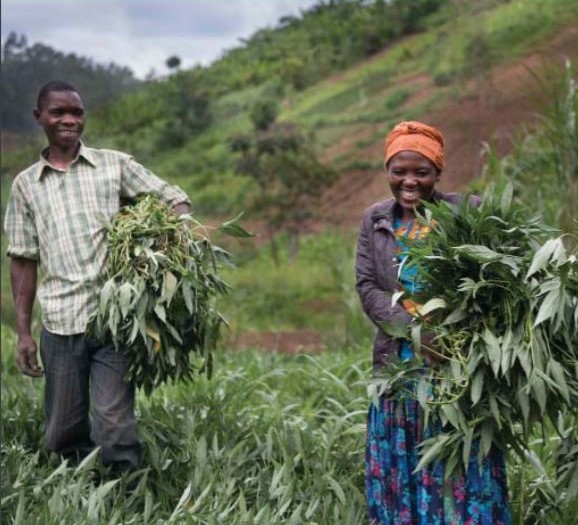Now more than ever, the agricultural research for development sector recognizes that women’s needs, preferences and realities need to be both understood and considered in the development and roll-out of new technologies and projects.
A “one size fits all” approach is not only ineffective, often leading to discarded technologies, but can also have unintended consequences that are damaging to families and communities.
“The myth that agricultural innovations are ‘gender neutral’ has been picked away over the years. Women themselves are farmers and not only housewives and agricultural laborers in their husbands’ shadow. They have different technological priorities and preferences,” explains Dr Gordon Prain, international consultant and former leader of the Social and Nutritional Sciences Division at the International Potato Center.
In 2013, an ambitious global project set out to better understand how ‘gender norms’ and ‘agency’ influence the adoption of agricultural innovations, with the aim of using the findings to guide agricultural researchers towards more gender-responsive and impactful work.
The term ‘agency’ refers to a person’s ability to define their own goals and act upon them, while ‘gender norms’ are the societal rules that govern men’s and women’s roles and everyday behavior and interactions. For example, in some countries, gender norms mean that women cannot own land or go to the market without their husband or a male companion. Norms vary across countries, regions and cultures, and can influence how farming is done and the roles that women and men play in agriculture.
The project, called GENNOVATE or ‘Enabling Gender Equality in Agricultural and Environmental Innovation’, was an unprecedented collaboration between 11 CGIAR Research Programs and nine research centers that carried out 137 case studies in 26 countries.
Gender researchers from the CGIAR Research Program on Roots, Tubers and Bananas (RTB), contributed to the study through in-depth group and one-on-one interviews with close to 1,600 women and men smallholder farmers cultivating RTB crops. The interviews were held across 10 countries in sub-Saharan Africa, Asia and South America.
Researchers set out to answer questions like, how do gender norms influence the types of agricultural innovations that women and men adopt? And how differently do men and women value physical, financial, and social assets for supporting agricultural innovation?
While gender norms are by definition context-specific, results identified some broader trends. For example, improved crop varieties were the most preferred innovation overall, although the type of crop and characteristics varied by both gender and region. In the East African Highlands for instance, women tend to appreciate cooking banana cultivars that are tasty or easy to cook, while men prefer cultivars with big bunches and a longer shelf life. In this region, gender norms about banana cultivation generally associate their sale for income with “men’s business”, while women mainly access the crop for food preparation at home.
A common trend among women across the 10 countries included in the RTB study was the desire for agricultural innovations that do not required increased dependence on men.
“Examples identified in the GENNOVATE case studies include irrigation equipment in Bangladesh that is bulky, heavy and not easily managed individually by women, and inappropriate transport options in Vietnam such as heavy motorcycles to access hillside farms and carry equipment. It also includes the rejection of sweetpotato storage structures in Tanzania that require men’s contribution to construct,” says Dr Prain.
“Women value technologies that align with their own current realities, such as crops that are suitable for home-gardens and small livestock that can be managed along with domestic and child rearing tasks and in some cases, restrictive physical mobility,” he adds.
These kinds of insights can not only help scientists to better create and target technologies, but also to deliver them in the right way, understanding the factors to encourage adoption and lasting impact.
For example, the study found that encouraging informal social networks helped women to access and share new knowledge from others in their community, even in societies with more restrictive gender norms that might limit their ability to move around independently. Dr. Nozomi Kawarazuka gender researcher from CIP in Asia argues that such findings have significant implications for current RTB programs. She points out that RTB crops and their technologies are often shared through these women to women networks outside formal research and extension systems. She cites the case of seed. To deliver high quality seeds to women farmers, there is a need to develop gender-responsive seed systems that use existing women’s social networks, and non-conventional seed access mechanisms.
Dr Kawarazuka also notes that women’s agricultural innovation is frequently motivated by a more complex set of criteria than economic advantages of RTB crops such as productivity, yield and price. They may also consider how the innovation contributes to her independence and power, as well as to aspects of the crop such as palatability, ease of preparation and cooking and so on. This means that we need to carefully consider women’s social investment in the crop, identify their trait preferences and reflect these aspects in the orientation and content of breeding programs.
Findings from the GENNOVATE research fostered an in-depth understanding of the gender-based shaping of preferences to help RTB formulate interventions that are socially appropriate for women, youth and poor men, thereby leading to higher rates of adoption and more inclusive and equitable impact pathways.
